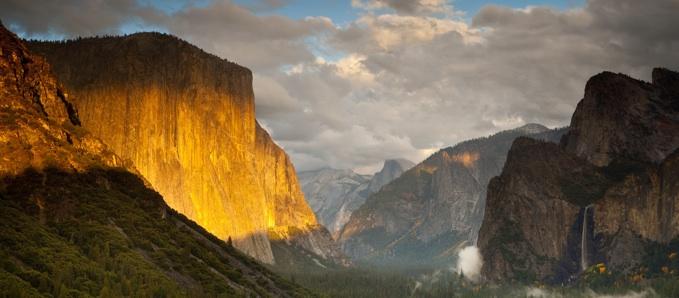As awe-inspiring as the Yosemite Valley is, it is not the length and breadth of Yosemite National Park, but rather only one measure of this High Sierra beaut. Sadly, a surprising number of people never venture out of the valley with its towering granite walls and, in season, wispy waterfalls, to explore the other wonders of the park.
And that's their loss.
John Muir discovered that in 1869 when he spent his first summer in the Sierra, venturing beyond the Yosemite Valley and high into the upper reaches of today's national park. It was there, among the mountains, the granite domes, the meadows, streams and forests that he found the deeper beauty of Yosemite, a beauty that can't easily be seen from the valley floor. The following passages come from his book, My First Summer in the Sierra:
Probably more free sunshine falls on this majestic range than on any other in the world I'd ever seen or heard of. It has the brightest weather, brightest glacier-polished rocks, the greatest abundance of irised spray from its glorious waterfalls, the brightest forests of silver firs and silver pines, more star-shine, moonshine, and perhaps more crystal-shine than any other mountain chain, and its countless mirror lakes, having more light poured into them, glow and spangle most.
And how glorious the shining after the short summer showers and after frosty nights when the morning sunbeams are pouring through the crystals on the grass and pine needles, and how ineffably spiritually fine is the morning-glow on the mountain-tops and the alpenglow of evening. Well may the Sierra be named, not the Snowy Range, but the Range of Light.
Climb up into this high country along the meandering Tioga Road and you're quickly surrounded by granite domes perfect for scrambling, lakes, and paths that lead hikers and pack trains deeper, and higher, into the park's core.
And while the light seems to shine best in the high country, down in the Yosemite Valley the magic can be seen at certain times of year, such as when Horsetail Fall catches and shimmers with the sun's rays, and throughout the spring and early summer when the high country's snowmelt plunges into the valley, casting off its feathery, diamond-beaded spray.
This valley does lure with its falls of water and towering walls of granite. And it should be on any first-timer's list of stops. But as impressive and captivating as Yosemite's acclaimed valley is, any trek to the national park that begins there should lead one further up into the highlands that so enchanted Muir, for they are just as beautiful and entrancing today as they were in the 1869 when he first ascended up into them.
Visiting Yosemite takes planning, and some patience, as it's incredibly popular. If you hope to land a room in the Yosemite Valley itself, starting to land a reservation a year ahead of your planned visit isn't too early. But don't restrict yourself to the valley. While it is awe-inspiring and magnificent, so, too, is the park's high country. Driving the Tioga Road with its many trailheads shouldn't be dismissed, nor should you overlook a trip south of the valley to the Mariposa Grove of Sequoias.
Traveler's Choice For: Hiking, climbing, photography, families, waterfalls







